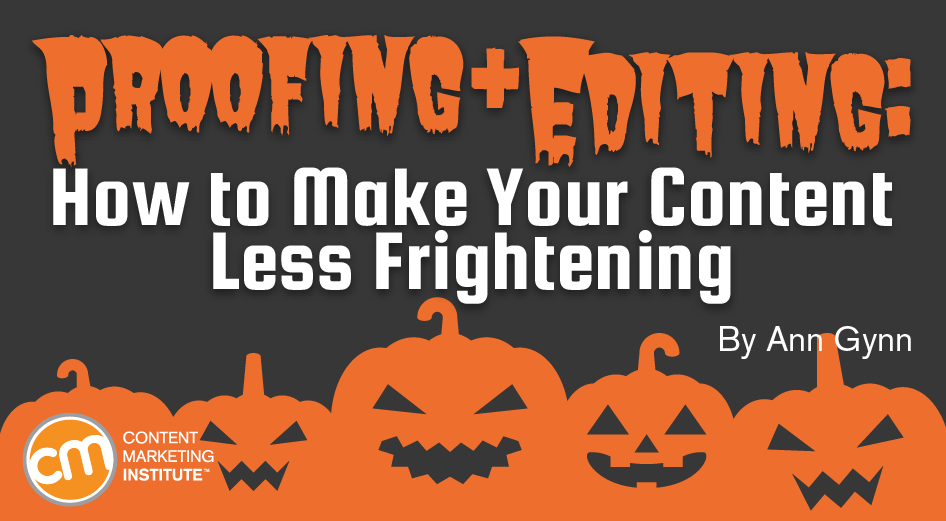Author: Ann Gynn / Source: Content Marketing Institute

Want to know a few scary truths ignored by too many content creators?
Editing and proofing are not the same thing. And you can’t adequately execute the two at the same time.
And if you think the same person can write, edit, and proof their own work, you should be afraid, very afraid of publishing that content.
Even the U.S. Bureau of Labor Statistics recognizes proofreaders as distinct from editors. Its description of proofreaders’ duties includes: “Read transcript or proof type setup to detect and mark for correction any grammatical, typographical, or compositional errors. Excludes workers whose primary duty is editing copy.”
What’s the difference?
Grammarly offers a succinct explanation of how a copy editor approaches content:
The tasks include checking written material for grammar, spelling, style and punctuation issues before it’s prepared for proofreading. A copy editor may also do a rewrite, if necessary, to fix any problems with transitions, wordiness, jargon, and to ensure the style of the piece fits with the publication. This work is known as revision.
In contrast, proofreaders review the content after it has gone through the editing process. They scrutinize the content in its finished and almost-published state to catch any typographical or minor errors that weren’t fixed in the editing process or were created in the production process.
For example, at CMI I edit the blog, but Lisa Higgs proofreads the posts in WordPress before they go live. With CCO magazine, I put on the proofreader’s hat, while Clare McDermott edits the articles.
TIP: If you wear a proofreader hat for some projects and an editor’s hat for others, don’t attempt to do one right after the other. Take a break. Exercise your brain with a non-word activity. If you don’t take a breather, you’re likely to be wearing both your proofer and editor’s hats – and the content review will be messy and unfocused.
How to edit well
With your editor’s hat on, follow this five-step process:
- Make sure you understand the overall purpose for the piece of content for the audience and for the brand before you read the first word.
TIP: Require content creators to write one or two sentences at the top of the content to explain to the editor who the intended audience is and why the content was created.
- Read through the content as a reader would – hands off the keyboard except to scroll. (If reviewing in print form, keep the pen out of your hands.)
- Go through the content again as an editor. Put your hands on the keyboard (or pen in hand) and note where the content doesn’t work well and why. Does the opening grab the reader’s attention? Is the content focused on a singular theme throughout the piece? Can every sentence and paragraph be understood? Does the order of the content flow logically? Does the content represent the brand’s voice and style?
- Pause, then edit. Depending on your process,…
Audience Team
The digital audience insights you need to build, manage and market to your digital audiences.

